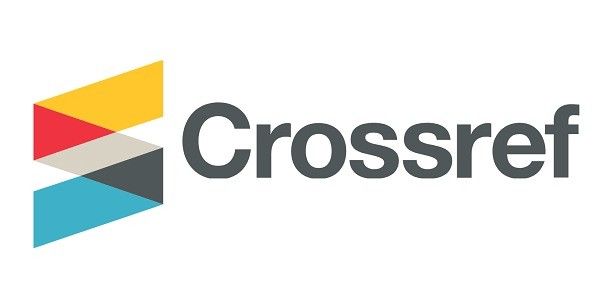Abstract
While research by design is critical in the development of architecture and design knowledge, there is still a need to deeply understand the design knowledge about the interplay between rationality and creativity in research-by-design projects. This paper attempts to address this issue by illustrating, rather than conceptualising, the inside process of a research by design project. The inside process will be discussed from three different points of view: (1) research or design interest tendency, (2) the performance of reflective attitude, and (3) a combination of views (1) and (2). The study resulted in an illustration of the interplay that suggests a dynamic forward-backwards act of thinking and making of a research-by-design project.
Publication Date
7-30-2019
References
Barnett, R. (2007). A will to learn: Being a student in an age of uncertainty. New York, NY: Society for Research into Higher Education & Open University Press.
Basballe, D. A. & Halskov, K. (2012). Dynamics of research through design. Proceedings from Designing Interactive Systems. Newcastle, UK.
Bashier, F. (2014). Reflections on architectural design education: The return of rationalism in the studio. Frontiers of Architectural Research, 2014(3), 424-430. http://dx.doi.org/10.1016/j.foar.2014.08.004
Burdick, A. (2003). Design (as) research. In B. Laurel (Ed.), Design research: Methods and perspectives (p. 82). London: The MIT Press.
Canaan, D. (2003). Research to fuel the creative process. In B. Laurel (Ed.), Design research: Methods and perspectives (pp. 234-240). London: The MIT Press.
Carey, J. (2018). Indeterminate duration. Interiority, 1(2), 185-202. https://doi.org/10.7454/in.v1i2.25
Cross, N. (2007). From a design science to a design discipline: Understanding designerly ways of knowing and thinking. In R. Michel (Ed.), Design research now: Essays and selected projects (pp. 41-54). Basel: Birkhäuser Verlag AG.
Cross, N. (1997). Creativity in design: Analyzing and modeling the creative leap. Leonardo, 30(4), 311-317. https://www.jstor.org/stable/1576478
Donahue, S. (2003). Enabling design. In B. Laurel (Ed.), Design research: Methods and perspectives (pp. 164-171). London, England: The MIT Press.
Dorst, K., & Cross, N. (2001). Creativity in the design process: Co-evolution of problem-solution. Design Studies, 22, 425-437. https://doi.org/10.1016/S0142-694X(01)00009-6
Faste, T., & Faste, H. (2012). Demystifying “design research”: Design is not research, research is design. Proceedings from IDSA Education Symposium 2012. Boston, USA.
Gero, J. S., & Mc Neill, T. (1998). An approach to the analysis of design protocols. Design Studies, 19, 21-61. https://doi.org/10.1016/S0142-694X(97)00015-X
Gnezda-Smith, N. (1994). The internal forces of creativity: When hearts start to flutter. Roeper Review, 17(2), 138-143. http://dx.doi.org/10.1080/02783199409553643
Gowans, S., & Wright, R. (2007). An interest in the uninteresting. In N. Temple & S. Bandyopadhyay (Eds.), Thinking practice: Reflections on architectural research and building work (pp. 44-57). London: Black Dog Publishing.
Hauberg, J. (2011). Research by design – a research strategy. AE… Revista Lusófona de Arquitectura e Educação, 2011(5), 46-56.
Krippendorff, K. (2007). Design research, an oxymoron? In R. Michel (Ed.), Design research now: Essays and selected projects (pp. 67-80). Basel: Birkhäuser Verlag AG.
Michel, R. (2007). Introduction. In R. Michel (Ed.), Design research now: Essays and selected projects (pp. 15-17). Basel: Birkhäuser Verlag AG.
McCarthy, C. (2005). Toward a definition of interiority. Space and Culture, 8(2), 112-125. https://doi.org/10.1177%2F1206331205275020
Nijstad, B. A., De Dreu, C. K. W., Rietzschel, E. F., & Baas, M. (2010). The dual pathway to creativity model: Creative ideation as a function of flexibility and persistence. European Review of Social Psychology, 21(1), 34-77. http://dx.doi.org/10.1080/10463281003765323
Plowright, P. D. (2014). Revealing architectural design: Methods, frameworks and tools. New York: Routledge.
Rhea, D. (2003). Bringing clarity to the "fuzzy front end": A predictable process for innovation. In Laurel, B. (Ed.), Design research: Methods and perspectives (pp. 145-154). London: The MIT Press.
Roggema, R. (2017). Research by design: Proposition for a methodological approach. Urban Science, 1(1), 2. https://doi.org/10.3390/urbansci1010002
Stappers, P. J. (2007). Doing design as a part of doing research. In R. Michel (Ed.), Design research now: Essays and selected projects (pp. 81-91). Basel: Birkhäuser Verlag AG.
Sternberg, R. J. (2006). The nature of creativity. Creativity Research Journal, 18(1), 87-98. http://dx.doi.org/10.1207/s15326934crj1801_10
Zimmerman, E. (2003). Play as research. In B. Laurel (Ed.), Design research: Methods and perspectives (pp. 176-184). London: The MIT Press.
Submitted Date
2019-07-08
Accepted Date
2019-07-30
First Page
177
Last Page
194
Recommended Citation
Harahap, M. M., Tregloan, K., & Nervegna, A. (2019). Rationality and Creativity Interplay in Research by Design as Seen from the Inside. Interiority, 2 (2), 177-194. https://doi.org/10.7454/in.v2i2.65
Creative Commons License

This work is licensed under a Creative Commons Attribution-NonCommercial 4.0 International License
Author(s) retain the copyright of articles published in this journal, with first publication rights granted to Interiority.






